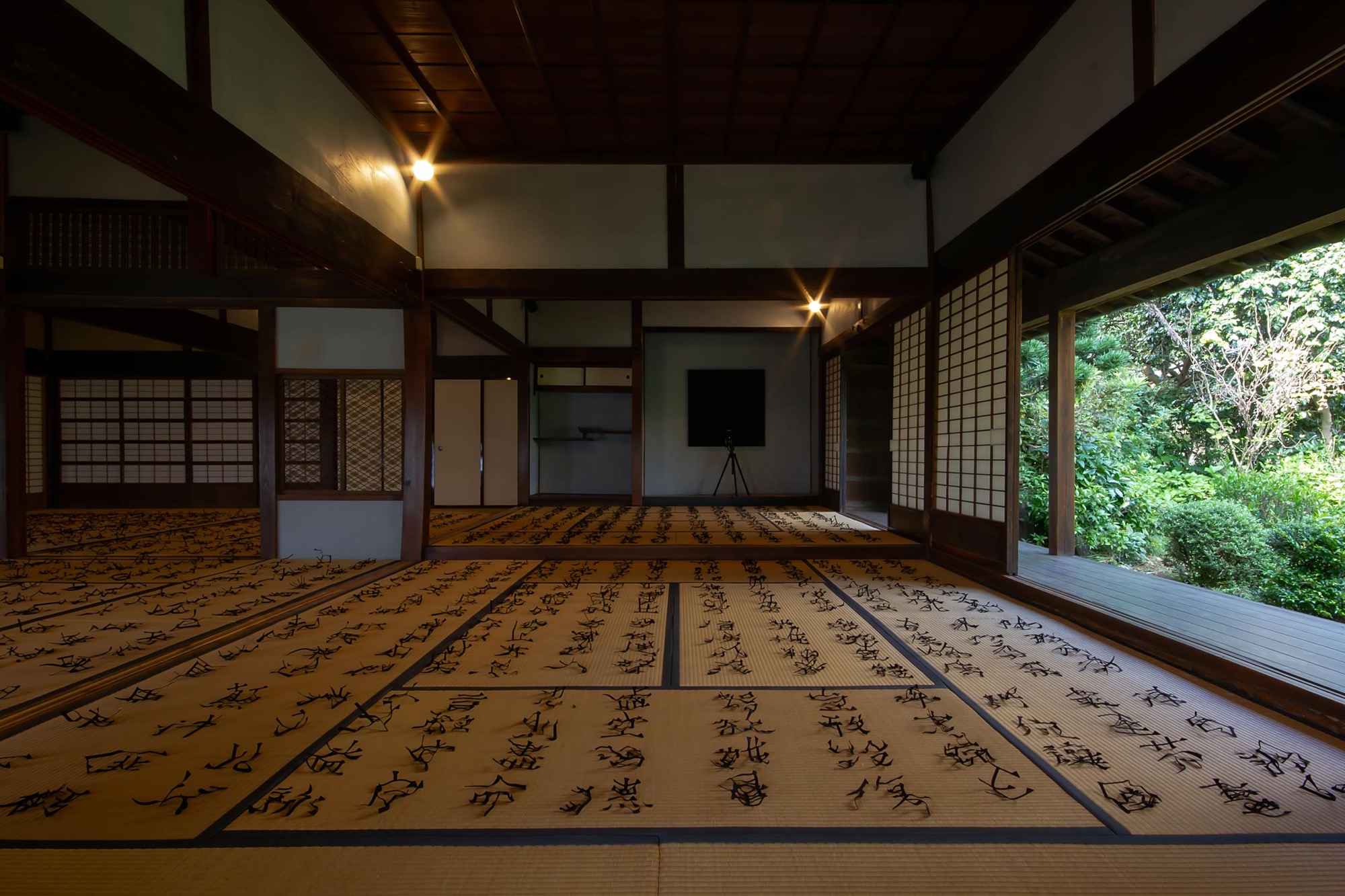
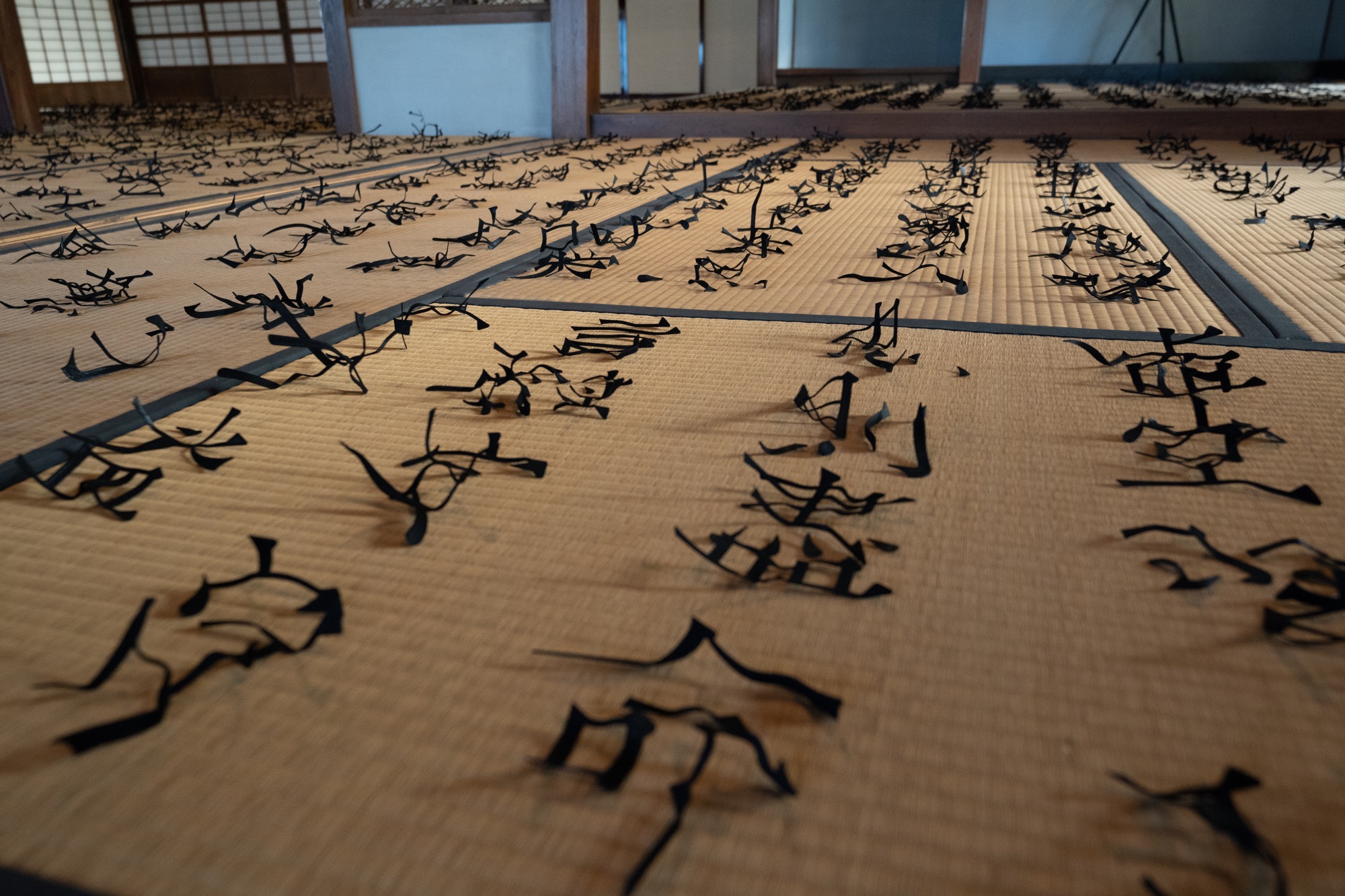
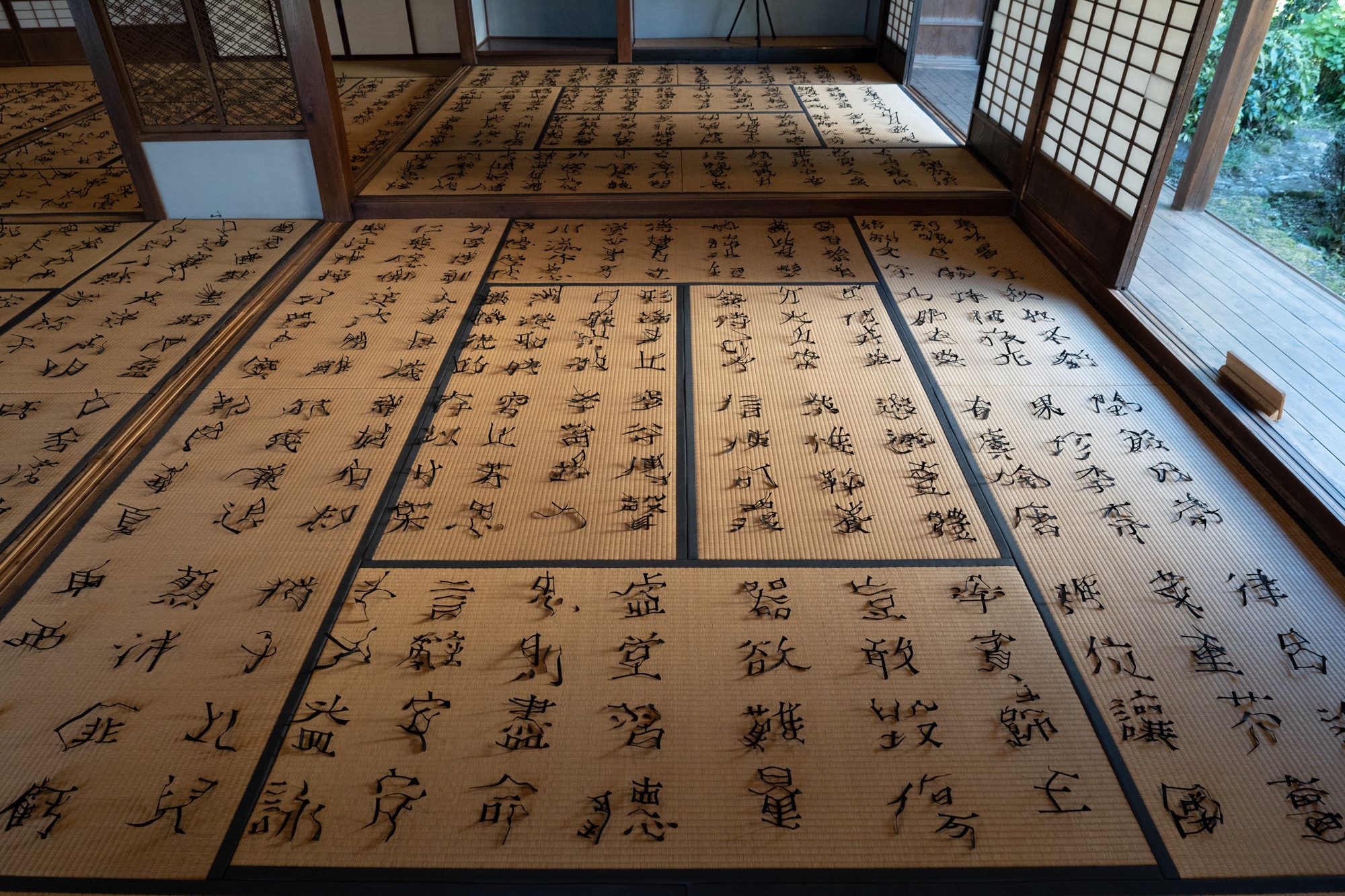
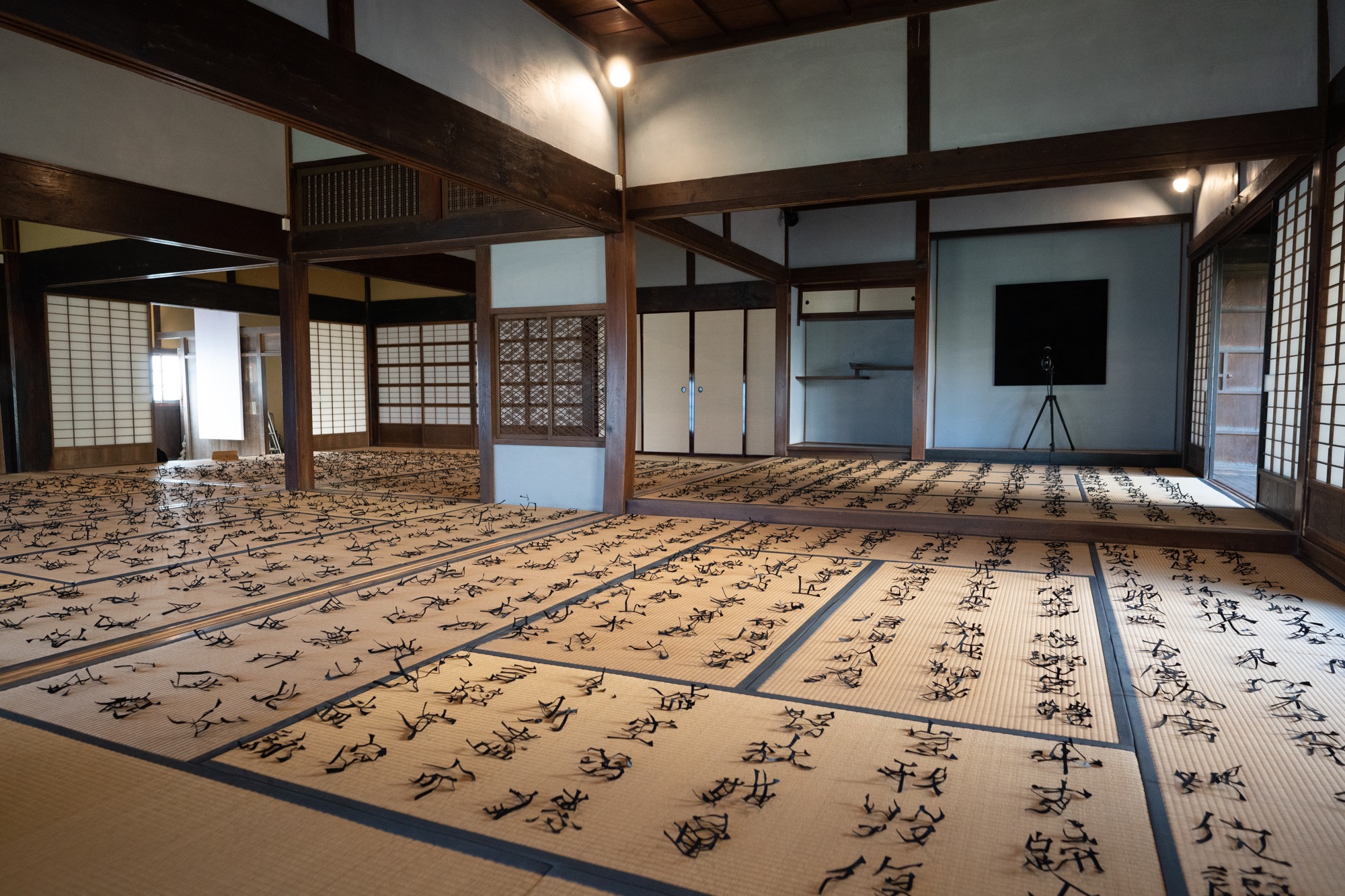
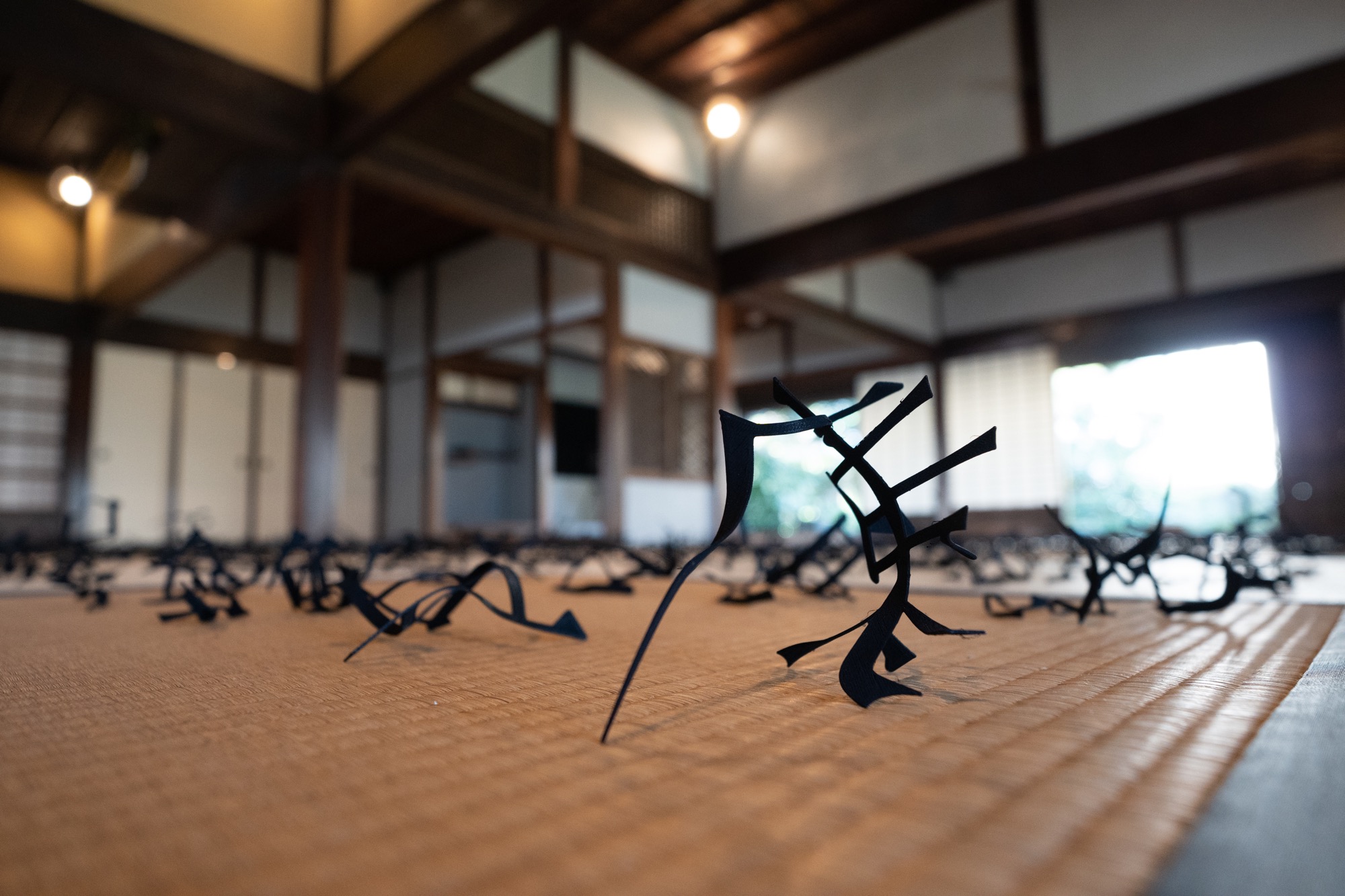
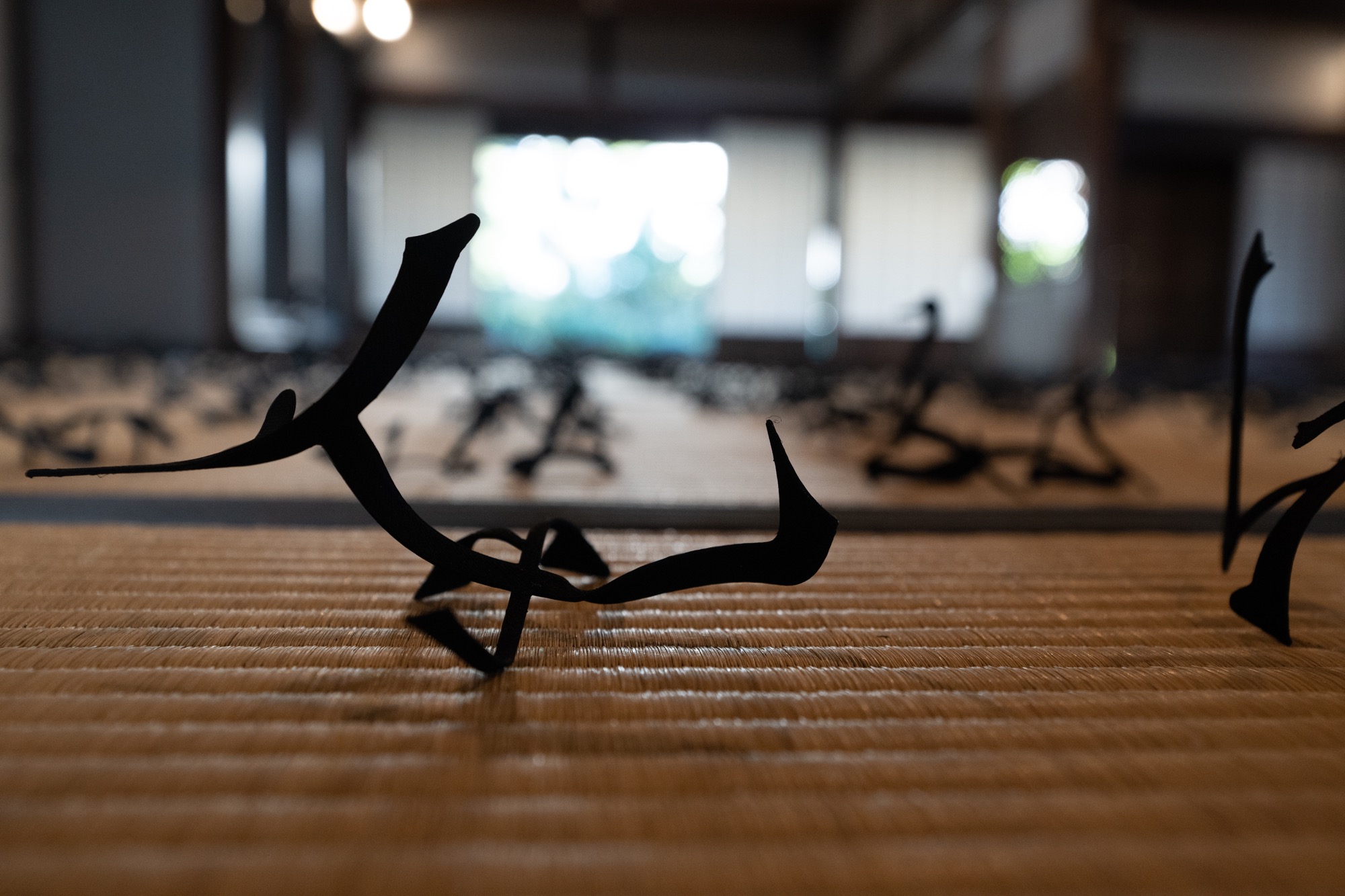
scatterd characters
散體千字文
Low reflective paint on Letter shaped resin
Variable size
2020
畳の上に低反射塗料を塗布した切り文字
サイズ可変
2020年
A group of brushstrokes lie scattered among tatami mats. Looking closely, one notices that they are from the Thousand Character Classic Chinese poem.
Thousands of characters, twisted and deconstructed into brush strokes, lie without overlapping on the mats, where they are moved by wind, and sympathetically interact with air flows and temperature changes that undulate inside and outside the building.
From the end of the 4th century to the beginning of the 5th, messengers from Baekje first brought collections of Chinese characters to Japan.
The Thousand Character Classic, one such collection, is a poetic verse that describes all things under the sun – astronomy, geography, politics, economics, society, history, ethics, and more. Even today, it is widely used drawn upon as a model for writing when teaching children Chinese characters.
The work imagines the "character upheaval" wrought by the Chinese characters, brought across the sea to an illiterate society.
畳の間に散乱する筆画群。よく見ればそれらが『千字文』であることに気づく。
重複しない千の文字は、筆画へとねじり解体され、畳の上で横たわり、風を受け、建物内外をたゆたう空気の流れや温度の変化と交感する。
4世紀末から5世紀初頭頃、漢字の束を最初に日本に持ってきたのは百済からの使者たちだった。
その束のひとつであった千字文は、天文、地理、政治、経済、社会、歴史、倫理などの森羅万象について述べた韻文で、子供に漢字を教えたり、書の手本として現在でも広く利用されている。
海を渡り、無文字社会に持ち込まれた漢字群がもたらした文字禍について想像してみる。